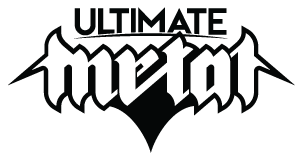Spanish chorizo is made from coarsely chopped fatty pork and usually seasoned with chili and paprika. The mild Spanish paprika used gives this sausage its characteristic flavor. The Chorizo itself can be found as either picante (hot) or dulce (sweet). Only the spicy variety incorporates chiles guindillas secas (small dried hot chiles). Some varieties are hung in cold dry places to cure, as happens with jamón serrano (ham). It often contains varietal parts of the animal, such as cheeks, salivary glands or lymph nodes. The Pamplona variety grinds the meat further. In some regions of Spain, such as Extremadura where the pork was for centuries basic for subsistence, a usual dish is huevos con chorizo (Spanish for "eggs with chorizo"). This dish consists, on the one side on fried chorizos (in olive oil or pork fat) accompanied with deep-fried eggs. The frying pan for the eggs must contain at least 3 centimeters (1 1/3 inches) of oil or melted fat, with a high temperature, i.e. when the oil starts to release smoke. The chorizo used for this dish is less cured and cannot be eaten without being cooked. The chorizo is also popular in Basque cuisine.
Mexican version:
Better known in the United States (and seldom encountered in Europe) are the Mexican and Caribbean versions. Based on the uncooked Spanish chorizo fresco, these versions are made from fatty pork (however, beef, venison and even kosher versions are known) that is ground rather than chopped and different seasonings are used in addition to chile.
Most Mexican chorizo is a deep reddish color, but green chorizo is also made, being popular in the vicinity of Toluca, Mexico. In some supermarkets in the southwestern US, chorizo is sold packaged loosely ground, having an appearance much like ground beef, except for the color, which is closer to orange than pink and consists of simple ground pork with the spicing of chorizo. It is a urban legend myth that "authentic" Mexican style chorizo, either pork or beef consists of only lips and salivary glands rather than the muscle cuts. Chorizo proteins like any sausage depends on the maker. This is finely ground and stuffed in plastic tubes to resemble sausage links but it is never prepared as links. The tubes are cut open and the almost paste like mixture is fried in a pan and mashed with a fork till it resembles finely minced ground beef.
In the United States, chorizo is generally known as a food for breakfast, although Mexican restaurants in both the United States and Mexico make tacos, burritos, and tortas with cooked chorizo. Chorizo con huevos is a popular breakfast dish in Mexico and areas of Mexican immigration in the United States. It is made by preparing the chorizo as mentioned above till it is thoroughly cooked before stirring in the eggs to create the chorizo scrambled eggs, or Corizo con Huevos. Chorizo con huevos is often used in making breakfast burritos or taquitos. In Mexico, Chorizo is also used to make the popular appetizer chorizo con queso, which is small pieces of chorizo served in or on melted cheese, and eaten with tortilla.
-----------------------------
Linguiça /lĩˈgwi.sɐ/ (ling-GWEE-sah) or linguica is a form of Portuguese pork sausage seasoned with onions, garlic, and paprika. It is similar in taste to chouriço; however, it has usually been spiced much more mildly than chouriço. Often, linguiça is much thinner than chouriço, and it is usually roasted over natural charcoal and served in thick slices with bread. Outside of Portugal and Brazil, linguiça is also popular in New England and Hawaii, where it is often simply called "Portuguese sausage." It is typically sliced before being braised or grilled. In Hawaii, McDonald's restaurants serve breakfasts featuring Portuguese sausage -- a regional variant of its usual menu.

